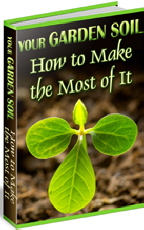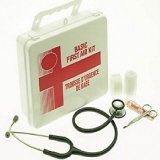|
Do You Want to Have Fertile, Healthy Soil?
For more information Download this Free Book Functions The most immediately apparent function of this, is a medium to support plant life. It provides support both physically and biologically. Physical support is provided by allowing the plant to grow its roots and hold itself in place. Biological support is provided by its ability to hold nutrients and water that the plant needs. 
What is it Made of? The four major components are mineral matter, organic matter (humus), water and air. Mineral matter refers to the inorganic elements e.g. stones, gravel and makes up to 40%-60% of its volume. This part usually originates from the bedrock that lies beneath it. Organic matter (humus) is the decayed remains and waste products of plants and animals and has a great effect on the chemical properties of the soil e.g. availability of nutrients. Almost 40%-60% of it's volume can be space and this is occupied by water and air.
Texture is defined as the size distribution of different mineral particles. These mineral particles are at their most basic level the following: sand, silt and clay. Sand particles are 2 to 0.05 mm diameter, silt particles are 0.05 to 0.002 mm diameter and clay particles are less than 0.002 mm diameter. Combination of these particles exhibit different properties and some combinations favour plant life better than others. The following are the most common classes of texture:
Silty Contains a high percentage of silt particles and feels smooth to the touch. This is well drained due to the size of the particles allowing space for water to permeate. This holds nutrients more readily than clay due to the spaces. It is easy to cultivate but can be compacted quite easily. Sandy Contains a high percentage of sand particles and feels gritty to the touch, Allows for quite a lot of space in between particles and as a result is very free draining. This has its disadvantages however as it does not hold water and essential nutrients can get washed away. Loamy This is the best type of texture you can have in your garden. This is a type whose properties are controlled equally by the percentages of clay, silt and sand particles. It is well drained but does not loose water too easily as is the case with sandy and sometimes silty soils. The fact that it retains water means it also retains nutrients for your plants to use. It has a great structure and is easy to cultivate. What Makes it Healthy? It must be fertile and have a good structure. For it to be fertile it must have nutrients readily available and a pH value at a recommended level for the plants that will reside in it. Nutrients that should be available are the essential nutrients nitrogen (leaf growth), phosphorous (root growth) and phosphorous (overall health). The other determiner is its texture. We learned about different types of texture earlier in this article. The type having a loamy texture is the healthiest and it should be strived for if at all possible. In general one that retain nutrients and allow water and air to permeate it will be beneficial for the life of your plants. How to Create Healthy Soil
No matter what type you have the addition of organic matter will work wonders for its health. Organic matter is plant and animal residues in varying forms of decomposition. It will replenish the nutrients and improve its texture. You may have heard countless times about adding your leftovers and grass clippings to a compost heap. This is a great idea as your compost is the best form of organic matter. If your soil is lacking in nutrients and you don't have access to a compost heap you have a choice of using inorganic or organic fertilizers. Inorganic fertilizers (inorganic salts, manufactured chemically) can be purchased at your local garden and are applied in a dry form that is raked lightly at the base of a plant or in a liquid form. The pH of your soil will also affect its fertility. Each plant has its own preferred pH value range. Conclusion Soil like a lot of things in the garden requires maintenance. We have learned about the different types of texture, what constitutes a fertile, healthy soil and how to create it if it does not exist. The next step is to step out into your garden, take a look at your soil and help your plants out if it is of a poor quality. Your plants will thank you ten-fold believe me. Good luck!
Return from Healthy Soil to Gardening
|





 Have you ever looked at the soil in your garden and considered it as anything more than dirt? If not you should because there is a lot more there than meets the eye.
Have you ever looked at the soil in your garden and considered it as anything more than dirt? If not you should because there is a lot more there than meets the eye.






